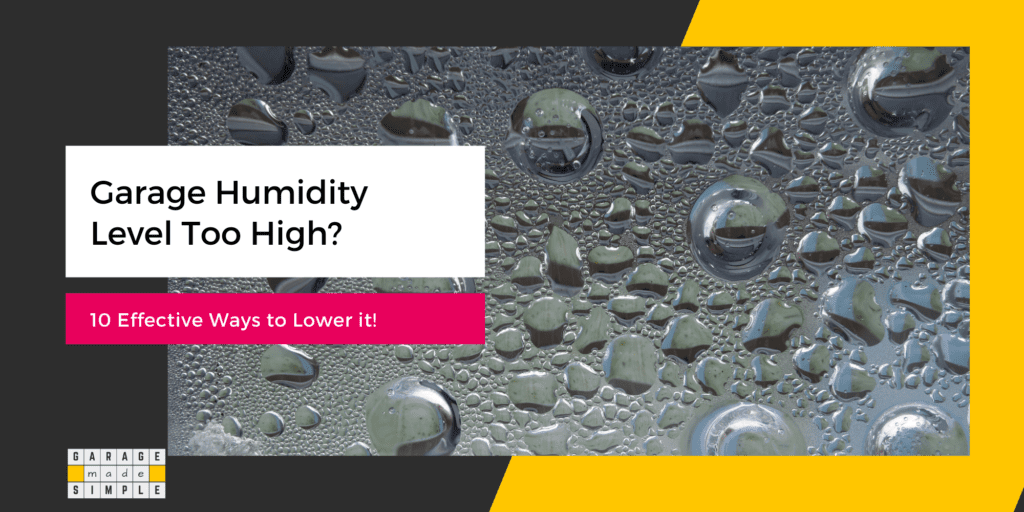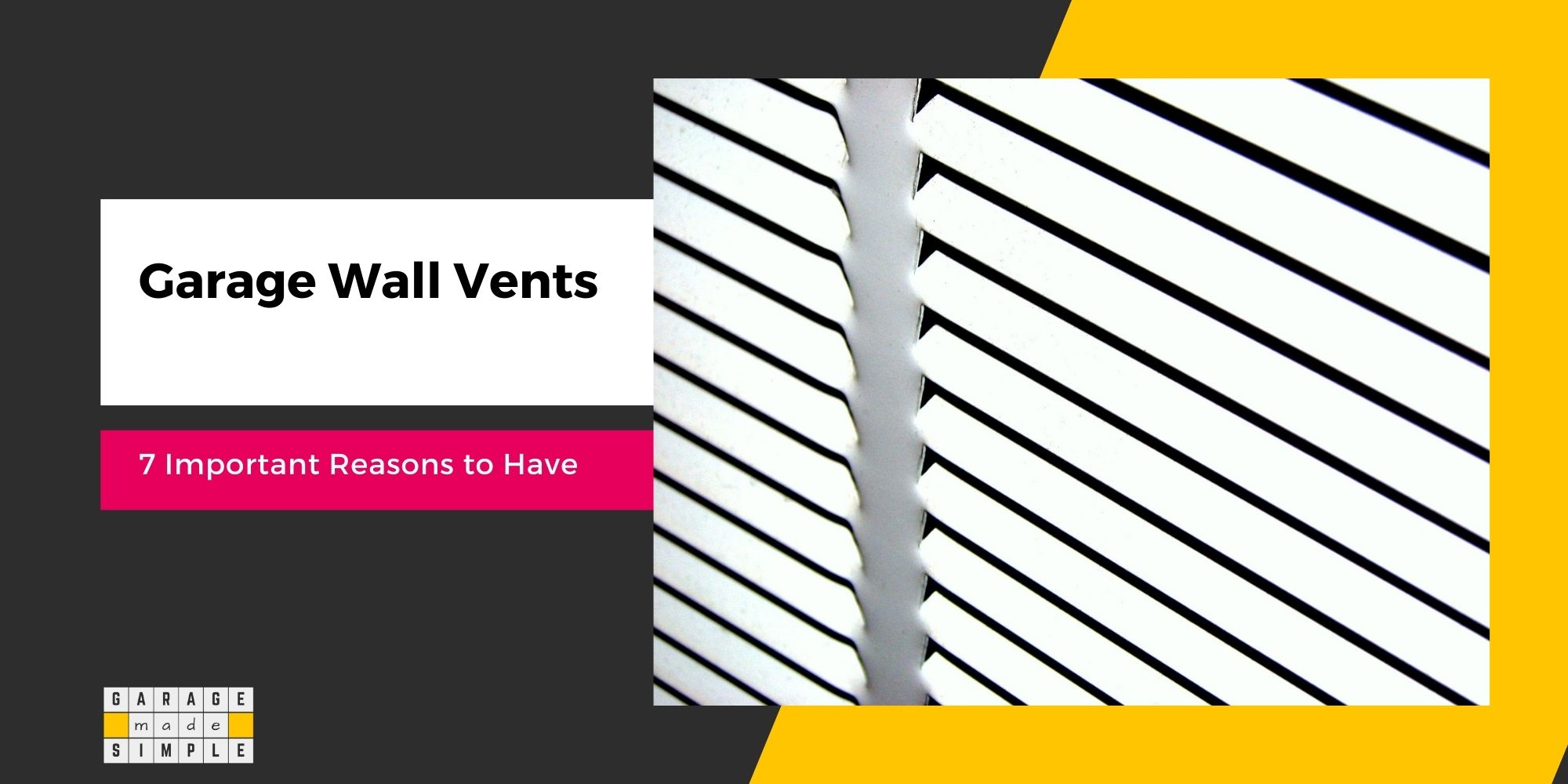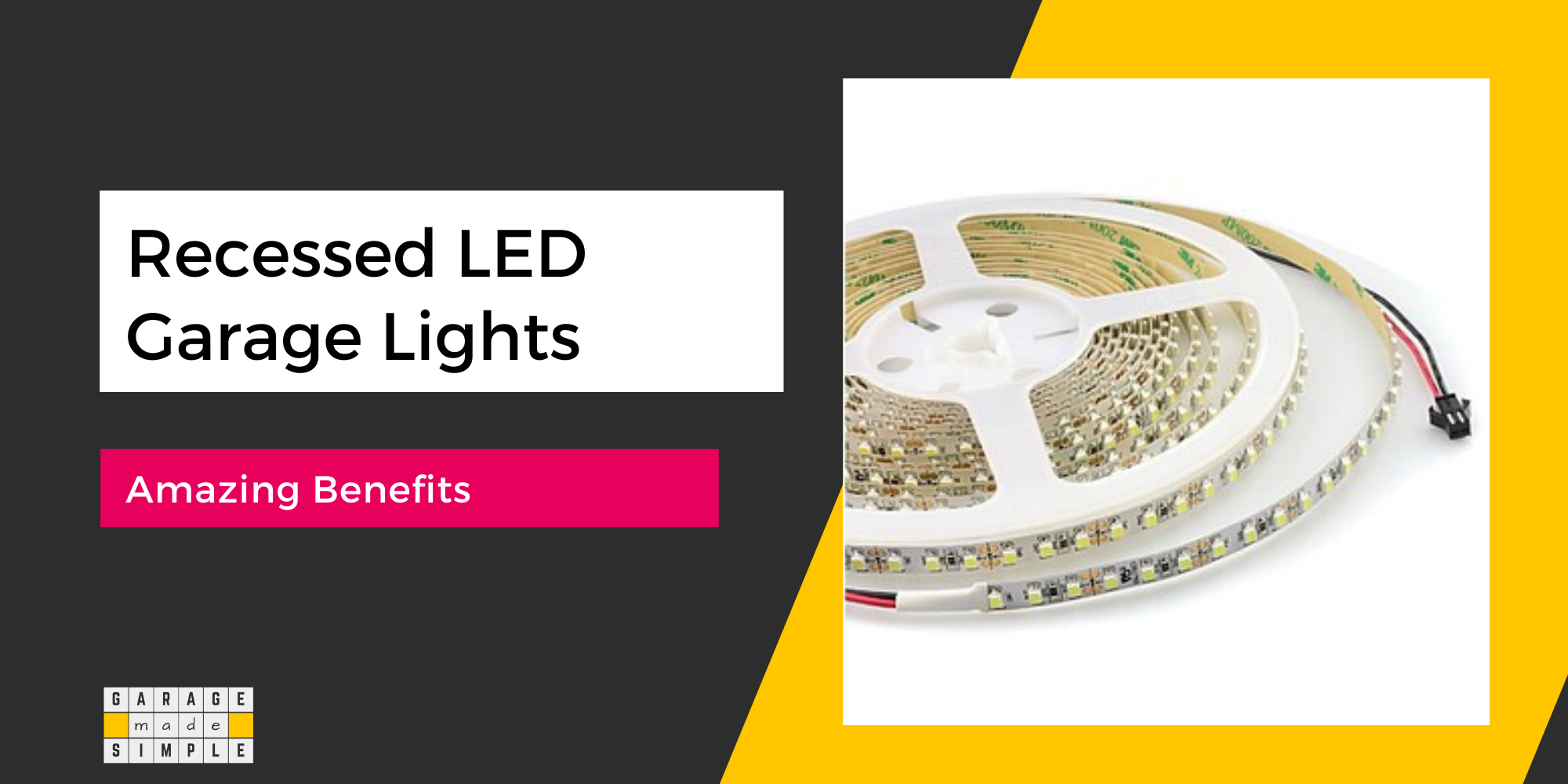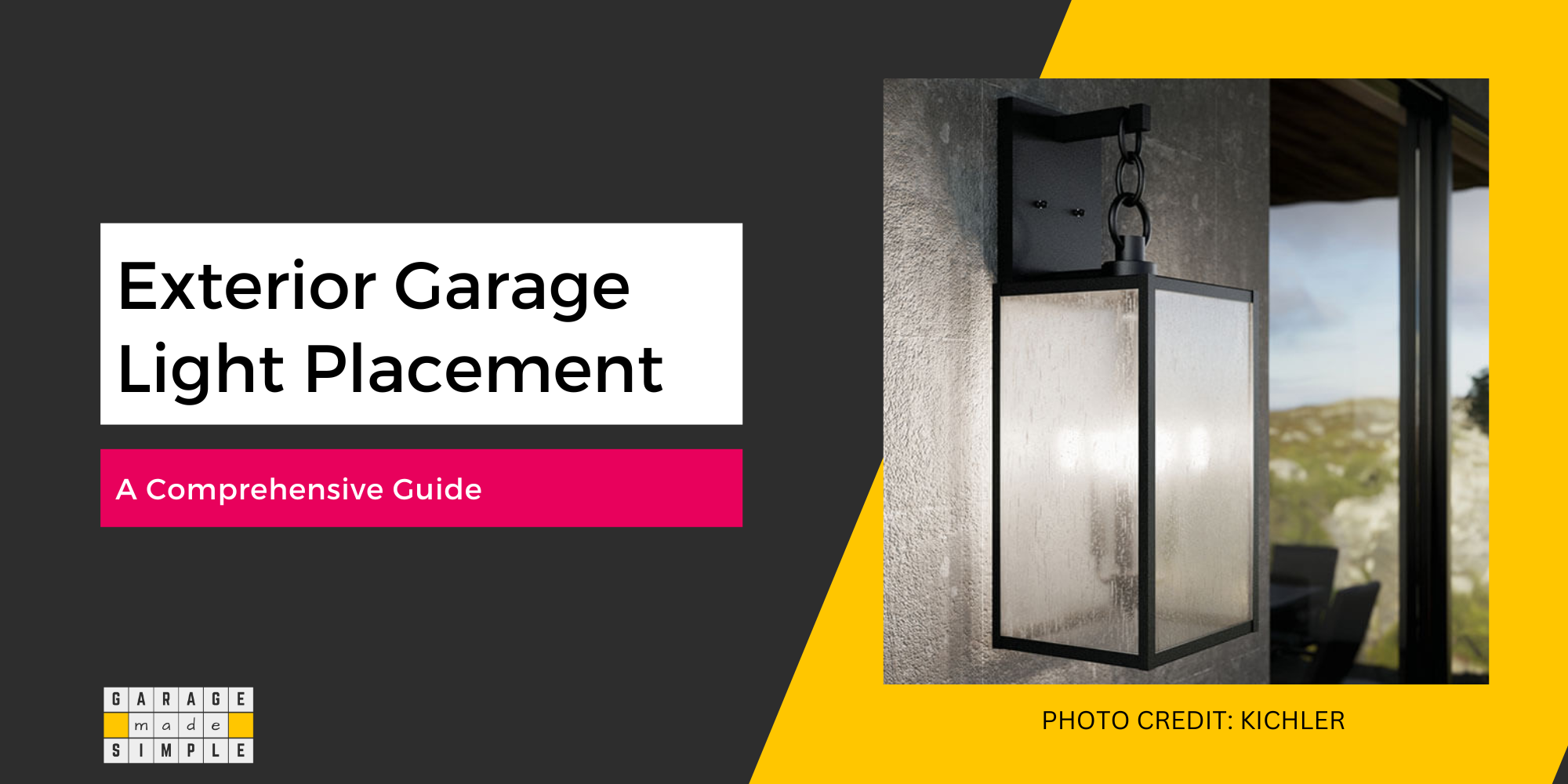Garage Humidity Level Too High? (10 Effective Ways To Lower It!)
garagemadesimple.com is a participant in the Amazon Services LLC Associates Program, an affiliate advertising program designed to provide a means for sites to earn advertising fees by advertising and linking to Amazon.com . The website is also an affiliate of a few other brands.
10 Effective Ways to Lower Garage Humidity Level – A Snapshot
| 1. Waterproof Foundation Walls |
| 2. Garage Floor Coating |
| 3. Install Insulation |
| 4. Replace Garage Door Seals |
| 5. Check for Roof Leaks |
| 6. Install Garage Drains & Keep Them Clean |
| 7. Install Wall Vents & Exhaust Fan |
| 8. Use a Dehumidifier |
| 9. Replace Cardboard Cartons with Plastic Storage Bins |
| 10. Scrape off Snow from Your Car Before Parking |
Reasons for Garage Humidity Level Being Too High
There are 3 common areas in most American homes that have high humidity; bathrooms, basement and the garage. It is easy to understand why bathrooms are so humid. High humidity in basements is primarily because they are below grade. But why is the humidity so high in your garage?
Garage Humidity Level can be too high for a host of reasons:
- Poor Ventilation: Insufficient airflow can trap moisture inside the garage, leading to high humidity levels.
- Leaky Roof: Roof leaks allow rainwater to seep in, increasing humidity as water accumulates.
- Cracks in Walls or Foundation: Structural issues can permit water intrusion, elevating humidity levels.
- Lack of Insulation: Uninsulated walls and roof keep the garage too cold which increases condensation.
- Ineffective Seals: Damaged garage door seals or windows can let moisture enter, causing humidity.
- Frequent Car Washing: Parking a wet vehicle inside raises humidity due to the residual moisture.
- Inadequate Drainage: Poorly functioning drains can result in water buildup during rain, increasing humidity.
- Condensation: Temperature differences between indoor and outdoor air can lead to condensation, adding moisture.
- Damp Items: Storing wet or damp items in the garage can contribute significantly to elevated humidity.
- High Groundwater Level: If the groundwater table is high, it can seep through the floor, increasing garage humidity.
A garage, especially a detached garage, is quite often built on a tight budget. As it is not considered as living space, there is a tendency to cut corners. Garage maintenance does not get the same attention as the kitchen, for example.
It is, therefore, not surprising that having high garage humidity level is quite common.
But high humidity in your garage, where you keep your precious cars and store sporting equipment you treasure, could actually be eating away into your prized possessions!

High humidity is the main cause of corrosion and rusting of metallic components in cars and garden equipment. High humidity weakens polymer based adhesives, widely used in sports gear. High humidity encourages growth of mold and pests that feed on natural fibers in clothing & furniture.
You must ensure that garage humidity is within acceptable levels, if you want your cars & personal goods to last. The correct humidity level is also essential for your health & well being, if you spend considerable time in the garage.
How to Lower High Garage Humidity Level
Here is my list of 10 ways to lower the humidity in your garage. They are effective and they work! They either prevent water & moisture from getting into the garage or help in eliminating moisture rich air.
1. Waterproof Foundation Walls
Ideally waterproofing of foundation walls must be done at the construction stage. If this was not done or done poorly, you can still do it.
For a detached garage the waterproofing must be done along the entire perimeter of the garage wall. Dig a trench to expose the entire foundation and a part of the footing.
In case a perimeter French Drain exists then it has to be exposed, cleaned and repaired. If there is no perimeter French Drain you must construct one. Perimeter French Drains take the rain and groundwater away from the garage foundation walls and discharge it into the storm water drain system.
The foundation wall and the footing should be cleaned, large cracks sealed and liberally coated with Liquid Rubber Foundation and Basement Sealant.
L R Liquid Rubber Waterproof Sealant
- Wide Application: Ideal for flat roofs, metal surfaces, foundations, wood, and more.
- Flexible & Durable: Offers over 1000% elongation and UV stability to prevent degradation.
- Eco-Friendly: Water-based, solvent-free, and odorless; safe for humans and pets.
2. Garage Floor Coating
The best time for ensuring that groundwater and moisture will not rise up through the concrete garage floor is when the slab is being poured. A vapor barrier membrane should be placed between the base and the concrete mix being placed.
Irrespective of whether that was done or not, you can still reduce the wicking of groundwater through the porous concrete slab into the garage. Make sure to use a penetrating concrete sealer followed by 2 coats of polyaspartic floor coating.
Other products such as EpoxyShield or Rocksolid Polycuramine Garage Floor Coating from Rust-oleum are also great as moisture barriers.
3. Install Insulation
Humidity can be measured as Absolute Humidity or Relative Humidity (RH). RH is more important when it comes to human comfort and well being, as skin moisture evaporates easily giving us a cool, pleasant feeling.
Warm air can possess more water vapor (moisture) than cold air, so with the same amount of absolute/specific humidity, air will have a HIGHER relative humidity if the air is cooler, and a LOWER relative humidity if the air is warmer.
NATIONAL WEATHER SERVICE
Garage Insulation keeps the air inside warmer resulting in lower RH and more comfort.
Owens Corning R-19 Fiberglass Batt Insulation
Johns Manville Insulation. With a R-Value of R-19 the insulation will fit into any 2×6 construction board. Kraft Faced. This insulation has a moisture barrier that is used for exterior wall, floor, or attic This insulation is perfect for 8 foot floor or walls. Two bundles of 5 for a total of 10 bags for at total of 871.8 square footage.
4. Replace Garage Door Seals
All garage doors have a bottom seal and a bottom threshold steel. When the door is closed the two form a water impermeable seal. However, the seals can get damaged or deteriorate. Rainwater can then enter the garage even when the door is closed.
To prevent this check the condition of the door seals regularly and replace them if required.
What if it is raining and you need to open the garage door? How do you stop rainwater from entering the garage?
One way is to use a tall enough garage door threshold seal such as GARADAM 2″ High Garage Door Flood Barrier Threshold Kit.
Another solution is to install a driveway trench drain in front of the garage door. The drain will prevent the rainwater from entering the garage and divert it to a stormwater drain system instead.
5. Check for Roof Leaks
The list of homeowners who have been caught with a flooded garage because of roof leak is endless. If you are lucky you’ll discover it after a light shower. You must immediately identify the leak and fix it.
Get a professional to conduct a check before winter. Switching to roofing material that does not corrode or crack easily will give you some peace of mind regarding garage roof leaks.
6. Install Garage Drains & Keep Them Clean
The garage floor is required to slope towards the garage door or a drain to comply with International Residential Code (IRC). Sometimes the pitch of the slope is not enough to keep the water moving and the floor dry. At other times the garage floor may have low spots where water can accumulate.
Fill out the low spots by using a self-leveling re-surfacer. If you do not have one, consider installing a garage floor drain. A garage floor drain is an effective way of removing excess water from leaks, flooding, snowmelt and car washing.
Don’t forget to clean the garage drains regularly so that you do not get caught with a clogged drain when you least want it.
7. Install Wall Vents & Exhaust Fan
A really easy and inexpensive way to reduce humidity in your garage is to install a garage exhaust fan high on one wall and some garage wall vents low on the opposite wall.
Use a timer or better still a humidity sensor to activate the exhaust fan. The airflow will remove the humidity from the garage and help dry out any wet surfaces.
8. Use a Dehumidifier
Using a dehumidifier is another effective way to reduce high humidity levels in the garage. Just make sure that you select the size appropriate to your garage size for the dehumidification to be effective.
Mini split AC, though expensive, gives you 3 features in 1 appliance; cooling, heating & dehumidification.
9. Replace Cardboard Cartons with Plastic Storage Bins
Are you still using cardboard cartons for garage storage? Cardboard is hygroscopic and absorbs moisture readily. On the flipside, it releases this moisture later resulting in an increase in garage humidity level.
Time to upgrade and replace them with airtight plastic storage bins. They are super convenient and look good too!
Rubbermaid Roughneck️ Storage Totes
- Heavy Duty Build: Ideal for large items, tools, camping gear, and more.
- Food Safe: Suitable for non-perishable foods, with a moisture-resistant tight lid.
- Stackable & Portable: Stacks without damage, easy to carry with built-in handles.
- Virtually Indestructible: Resistant to extreme temperatures (0-110℉).
- Versatile Use: Perfect for closets, garages, and more.
10. Scrape off Snow from Your Car Before Parking
Scrape off the snow from the top of your car before you park it in the garage. The snow on the car, if not removed, will melt and drip onto the garage floor. This not only raises the humidity level of the garage but also creates a slip hazard on the garage floor.
Thank you very much for reading the post. I do hope you found it informative and useful.









